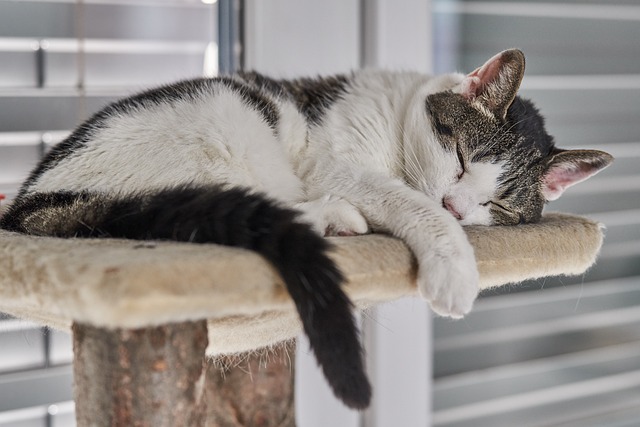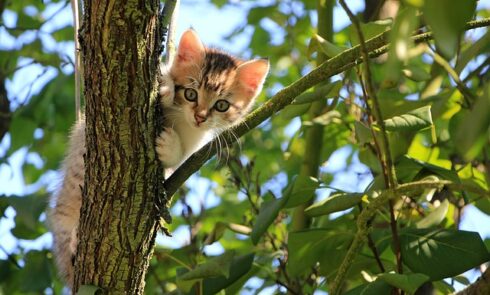In the land of the long white cloud, New Zealand, weather patterns exhibit a captivating dance of diversity. They oscillate between bouts of blistering sunshine and nippy cold spells with an unpredictable rhythm. This climatic capriciousness poses a formidable challenge to those who have chosen feline companions for their homes, particularly if their cats are acclimatized to frolicking in the great outdoors.
The concept of an outdoor cat house in New Zealand is not some frivolous indulgence but rather becomes a necessity woven into the very fabric of responsible pet guardianship. It stands as a haven against unfavourable meteorological surprises that could potentially harm these cherished creatures.
As custodians charged with overseeing your beloved cat’s welfare and health, it is essential to understand that a well-structured outdoor cat house can serve as more than just shelter; it becomes your four-legged friend’s fortress against nature’s harsher elements. Whether it be under the scorching glare of summer or bracing chilly gusts in winter or even during unexpected downpours, an outdoor cat house within NZ enhances your feline companion’s quality of life outside its indoor comfort zone by ensuring both safety and comfort.
Choosing the Right Material for Your Feline’s Abode
Pondering over the choice of construction material for your feline’s abode can significantly sway its endurance and snugness. The selection stands as a testament to how proficiently the cat house will hold up against New Zealand’s capricious weather, providing shelter in harsh meteorological conditions. A crucial query that emerges is, “What constitutes an optimal outdoor haven for cats?”
To address this question, one must delve into understanding regional climate nuances, your kitty’s preferences and the fundamental objectives behind providing the shelter. Compressed wood or plastic materials are often hailed for their robust structural integrity capable of standing resilient against forces of wind, rain and fluctuating temperatures. For fostering warmth and comfort within these shelters, consider lining interiors with cozy fabrics such as flannel or faux fur. Furthermore, the chosen fabric should not pose cleaning challenges since hygiene is paramount yet should also be non-toxic to ensure safety for your pet cat. Thus when deciding on materials remember key factors like comfort and safety of your feline companion coupled with durability and ease-of-maintenance considerations for their little home.
Designing Cat Houses for Weather Resistance
In the endeavour to shield our cherished feline companions from New Zealand’s often whimsical weather, one must weave thoughtful design elements into the fabric of a cat house creation. The relentless onslaught of inclement climes – searing summers, drenched autumns, and frosty winters – demands a design strategy that strikes an equilibrium between thermal balance and the comfort and safety of your feline friend.
Many cat guardians find themselves ensnared in the query – ‘Will an outdoor cat utilise a purpose-built shelter?’ The resolution to this intriguing conundrum is intimately entwined with the structure’s stalwart resilience against harsh meteorological circumstances. Outdoor cats are inclined towards seeking refuge within these shelters if they offer sanctuary from severe climatic conditions. Consequently, integrating features such as elevated floors for deluge defence, inclined roofs facilitating effective water drainage, along with insulated walls offering temperature regulation can not only fortify your feline’s security but also inspire frequent use.
A meticulously crafted weather-defiant abode could potentially serve as a crucial lifesaver for our fuzzy comrades who predominantly inhabit outdoor areas.
Building a DIY Cat House: Essential Steps

Embarking on the journey to fashion a do-it-yourself abode for your cat necessitates an unwavering focus on minutiae and strict adherence to certain indispensable steps. The execution of these stages ensures not only a safe haven for your furry friend but also the essential comforts that nurture their well-being. One pivotal query you must ponder upon is whether or not domesticated cats can acclimatize outside. This consideration is crucial as it greatly influences which specific features should be included in this feline residence.
Initially, drafting the blueprint of this cat mansion calls for utmost importance. It encompasses dimensions, air circulation mechanisms, insulating layers, and ingress and egress points. Moreover, transitioning domesticated cats outdoors may expose them to various environmental factors they are unaccustomed to confronting. Henceforth, it becomes imperative that the cat domicile includes elements designed specifically to shield against New Zealand’s erratic weather patterns.
Each stage in the construction process presents a detailed guide on how one can forge a comfortable sanctuary capable of withstanding outdoor conditions while offering an area where house cats can explore their surroundings at leisure yet retreat when needed for safety or comfort.
Lastly, remember to include elements within this structure that cater explicitly towards a cat’s playful tendencies – such as climbing posts, lookout decks, scratching areas & snug hideouts – each feature aiming towards fulfilling instinctual needs and responding adequately to subtle behavioural cues thereby fundamentally enriching their outdoor experience within this custom-built feline home.
Incorporating Comfort Features in Your Cat’s House
Contrary to the popular consensus, it’s not only entirely feasible but also heartily advised to craft an outdoor cat house that extends optimal comfort features. The magic lies in tactically integrating elements that render the shelter snug and cosy, akin to a sanctuary from unpredictable weather shifts; an ideal retreat for your feline friend. It is crucial to consider New Zealand’s distinct climate conditions such as intermittent rain showers or stretches of icy draught while conceptualising this ultimate comfy haven.
In response to the often-posed query “Is constructing an outside cat house possible?”, the answer resounds strongly in affirmation. Incorporating specific provisions like insulating material on inner walls can help keep biting cold at bay. Constructing raised floors will ensure your pet isn’t directly in contact with frigid grounds, particularly during colder seasons. Waterproofing roof and wall structures is another way of safeguarding your furry pal against heavy rains. Don’t forget adding a door or flap that can be closed off during harsh weather, thus providing perfect conditions for your kitty’s peaceful sleep.
Essential Maintenance Tips for Cat Houses
The intricate dance of maintaining a cat house in excellent condition requires regular attention to cleanliness and care. An essential facet of this process is the occasional inspection, where one must be keen to detect subtle hints of wear and tear, damage, or potential pest entry points that could disrupt your feline companion’s sanctuary.
Taking swift action is crucial upon noticing worn-out elements; replacing them promptly and diligently sealing any cracks will help sustain the structure’s integrity. This also acts as an effective barricade against uninvited intruders attempting to invade your cat’s domain.
An equally vital part of upkeep is cleaning the cat house routinely. One should take meticulous effort in removing excess fur, litter, and other waste materials using either a damp cloth or vacuum cleaner. The goal here is not just cleanliness but ensuring the abode remains free from unpleasant odors for your furry friend’s comfort.
If you’re fortunate enough to have a cat house made from washable material, it can benefit from an occasional gentle cleanse with mild soap and water. However, regardless of what material makes up the dwelling place for your feline friend – whether washable or otherwise – remember always to air dry thoroughly before allowing re-entry by our whiskered friends. In New Zealand’s somewhat damp climate especially important step helps stave off unwanted fungal growths or bacterial issues.
Exploring Different Styles of Cat Houses
In the labyrinthine marketplace of cat accommodation, there blooms a kaleidoscope of designs, honed to appease the myriad tastes and requirements of our feline companions and their human caretakers. An increasingly lauded design is that of the multi-tiered cat dwelling – an intricate maze replete with numerous rooms and lofty perches designed for leaping or climbing, quenching cats’ thirst for elevated lookout points. These grand estates often boast sturdy foundations along with several chambers which offer ample scope for multiple cats to stake out their dominion.
Conversely, on the more austere side of this design cornucopia lie minimalist kitty retreats – compact yet cozy abodes focusing on offering insulated sanctuaries to your whiskered confidante. Though bereft of multiple nooks and crannies these dwellings compensate through ergonomic warmth conservation features – ideal for combating New Zealand’s brisk climes.
Further into this whimsical world one can discover facades modeled after human domiciles; charming replicas mirroring owner’s home aesthetics thus satisfying those who wish their pet’s habitat harmoniously blend with existing surroundings. Much like its human counterpart in architecture; the realm bristles with vibrancy offering a plethora assortment aptly catering every distinctive want in feline living quarters.
FAQ
Given the dual touch of scorching summers and freezing winters characteristic to New Zealand’s climate, cat houses become indispensable. They serve as a haven for cats amid harsh weather patterns, ensuring their comfort and safety throughout every season.
While choosing a suitable material for your cat’s dwelling, consider factors such as durability, ease-of-maintenance, resistance against various weathers and overall comfort. Natural materials like wood are often preferred due to their robustness and insulating capabilities.
To craft a home that resists different weather elements for your cat, ponder upon features like waterproof roofing, insulated barriers and raised flooring. Such attributes will shield your kitten from varied challenges posed by rainstorms or gusty winds as well as heatwaves or frosty chills.
Absolutely! Venturing into building a DIY kitty house can indeed be gratifying. Vital steps encompass devising an outline of your envisioned design followed by judicious selection of materials suited best for construction; then comes piecing together all components forming the structure along with embedding insulation layers & adding weatherproof constituents; finally culminating with introducing comforting accessories like bedding or playthings.
Coziness centric additions to any feline household may span soft plush bedding options or scratching posts alongside windows inviting natural light influx; playful toys are also great enhancements. Some guardians take additional care during cold spells by incorporating heated pads while others focus on ventilation provision for warmer spells.
A routine cleaning regimen is vital to maintain your feline’s home in a prime state. Regularly inspect the structure for any signs of damage or wear and tear, repairing or replacing parts as needed. Don’t forget to frequently refresh bedding items too, keeping your pet’s comfort & hygiene at the forefront.
The spectrum of kitty house designs is quite broad-ranging. Traditional ones may feature a simplistic box outline with an entry point, while more intricate versions boast multi-tiered structures complete with individual rooms, even mirroring human residences. Contemporary designs often lean towards minimalist aesthetics and sleek contours. Some owners also opt for theme-based homes; think along lines like a jungle-themed abode replete with climbing apparatuses.


